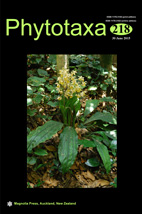Abstract
This paper presents results concerning the taxonomic revision of Ulva taxa originating from herbarium specimens dating back to 1849–1959. A staining and softening mixture was applied to allow a detailed morphometric analysis of thalli and cells and to detect many morphological details. The study focused on individuals collected exclusively from inland water ecosystems (having no contact with sea water). Detailed analysis concerned the following items: structures of thalli and cells, number of pyrenoids per cell, configuration of cells inside the thallus, occurrence or not of branching thallus, shapes of apical cells, and shape of chromatophores. The objective of the study was to confirm the initial identifications of specimens of Ulva held in herbaria. The study sought to determine whether saltwater species of the genus Ulva, e.g., Ulva compressa and U. intestinalis, could have been found in European freshwater ecosystems in 19th and 20th centuries. Moreover, the paper presents a method for the initial treatment of voucher specimens for viewing stained cellular structures that are extremely vulnerable to damage (the oldest specimens were more than 160 years old). The use of a glycerine-based softening mixture allowed the detailed analysis of the anatomic structure of cells as well as the determination of the number and size of pyrenoids, i.e., some of the key taxonomic features of Ulva taxa. Most of specimens were identified as belonging to the species U. flexuosa. Marine species such as Ulva intestinalis or U. compressa were not confirmed to occur in the inland water ecosystems of Central Europe in the 19th and 20th centuries.

